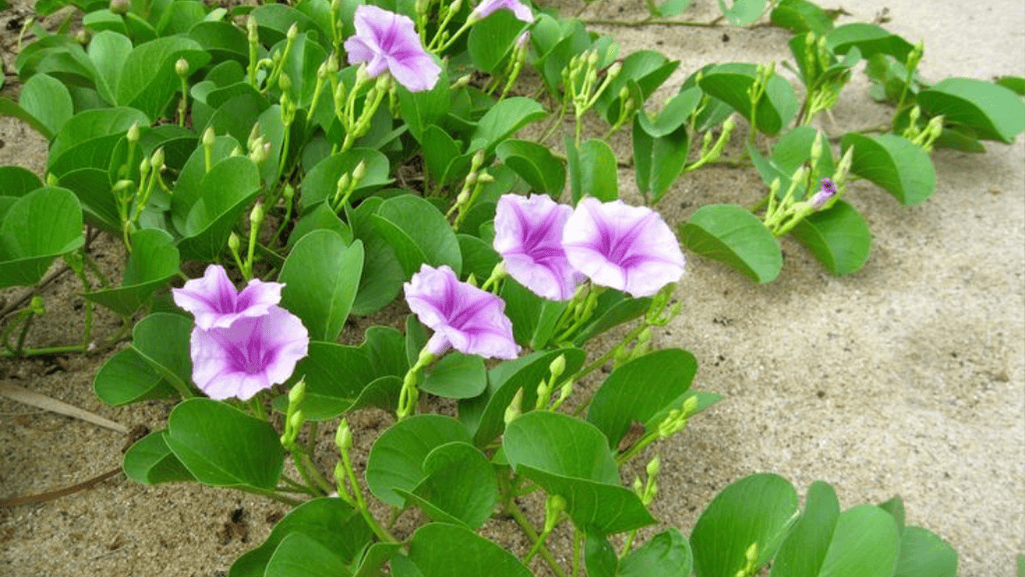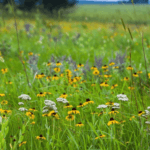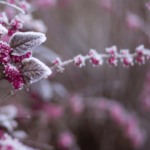
Beautiful flowers gardenia Plants For Your homes

Start an exciting journey through Florida’s stunning coastlines. Here, native shoreline species flourish in the warm sun and sea breeze. You’ll see Sea Oats and Beach Sunflowers, plants that thrive in tough coastal conditions. They create a colorful and textured landscape that amazes everyone.
Florida’s coast is home to many unique plants. These plants can turn your beachfront into a tropical paradise. By choosing the right coastal plants, you can make a beautiful, easy-to-care-for garden. It will also help local wildlife.
Dive into the world of florida beach gardening. Learn how to make a beautiful beach landscape that fits with nature. We’ll show you plants like Seagrape and Saw Palmetto that are both stunning and adaptable.
Whether you’re an experienced gardener or new to coastal gardening, this guide has everything you need. It will help you create a lush, oceanfront paradise. Join us as we explore Florida’s coastal plants and bring the beach to your home.
Florida’s coastline is full of life, with many native plants that love the tough conditions. These plants help keep the beach healthy by holding the sand in place and stopping erosion. They also give homes to many animals.
Sea oats, beach morning glory, and dune sunflower are just a few examples of Florida’s amazing plants. They can handle the salt, wind, and sun because they have special features. These include deep roots and leaves that keep water inside.
The railroad vine is a standout in Florida’s coastal plants. It spreads across beaches and dunes, holding the sand in place. Its long roots and beautiful flowers make it a favorite among pollinators and beach visitors.
Florida’s coast is home to many different plants, each with its own special traits. These plants are crucial for the health of the coast. Here are a few examples:
Using native coastal plants in seaside naturescaping and landscaping is a great idea. It makes gardens beautiful and helps the coast stay healthy. These plants are easy to care for and don’t need much water.
By using Florida’s coastal plants, we celebrate our shorelines and help protect them. It’s a way to care for these special places.
It’s important to learn about and protect Florida’s native plants. By teaching others and supporting conservation, we help keep the coast beautiful for the future. We want future generations to enjoy the beauty of Florida’s beaches and dunes.
Start a fascinating journey through Florida’s coast and find the amazing native beach plants. These plants are not just beautiful; they also help keep the dunes stable and provide homes for wildlife. Let’s look at some of the most impressive plants that make Florida’s beaches so special.
Sea oats are iconic dune plants known for their tall, graceful look. They sway in the wind and have roots that hold the dunes in place. This keeps the shoreline safe from erosion. Their unique seed heads add beauty and movement to the beach.
Railroad vine is a low-growing, evergreen groundcover that’s a real treasure among Florida’s beach plants. Its dark green leaves and bright, pinkish-purple flowers attract many pollinators. It’s great for beach gardens because it keeps the soil stable and adds color.
Dune sunflower adds a ray of sunshine to Florida’s beaches. It’s a low-growing, drought-resistant plant that blooms with yellow flowers in summer and fall. These flowers not only brighten the beach but also feed butterflies and other helpful insects.
Native beach plants like sea oats, railroad vine, and dune sunflower are not just beautiful. They’re also key to Florida’s coastal ecosystems. By using these plants in landscaping and gardening, we can create stunning, easy-to-care-for gardens that help protect our shorelines.
Florida’s coast is home to many hardy, salt-tolerant plants. These tropical beach plants beautify seaside gardens and help stabilize dunes. They prevent erosion too. Let’s explore some iconic beach plants in Florida.
Seagrape is a large, evergreen shrub or small tree common in Florida’s coast. Its round leaves and edible fruits are attractive. It’s also great for privacy and wind protection.
Saw palmetto grows low in Florida’s sandy soils. It has fan-shaped fronds and small, fragrant flowers. It’s good for pollinators and can handle different soils, making it versatile in beach landscaping.
Gumbo limbo, or tourist tree, has red, peeling bark. It’s a large tree with glossy leaves. It grows fast and provides shade, tolerating sandy soil and drought well.
Designing a seaside garden means choosing the right plants for coastal challenges. Native species like seagrape, saw palmetto, and gumbo limbo are perfect. They create beautiful, easy-to-care-for landscapes in Florida’s sandy soils and harsh conditions.
Florida’s coastlines are home to a wide variety of plants. These plants have adapted to the tough conditions of sandy shores, salt marshes, and coastal dunes. They play a key role in keeping the balance of florida beach ecosystems.
Coastal plants can handle a lot of salt. About 47.5% of them are very salt-tolerant, and 27.5% are moderately tolerant. This lets them live in areas with lots of salt spray and occasional flooding. For example, the foxtail agave has special leaves that get rid of excess salt.
Beach plants also have deep roots. These roots keep the plants stable in shifting sands and prevent erosion. They also help the plants get water from the water table, even when it’s dry. In fact, 40% of coastal plants live in dry places, and 45% like moderate moisture.
Many coastal plants have leaves that store water. For instance, the beach morning glory and railroad vine have thick leaves to save water. They also have waxy coatings to reflect sunlight and prevent water loss. Plus, they can handle being buried in sand and exposed to wind.
The incredible adaptations of coastal plants not only ensure their survival in harsh environments but also contribute to the overall health and stability of florida beach ecosystems. From dune grasses that stabilize shifting sands to salt-tolerant shrubs that provide habitat for wildlife, these resilient plants play a crucial role in maintaining the beauty and biodiversity of Florida’s coastlines.
Coastal plants are found all over Florida, but more in the southeast and Florida Keys. These areas have 67.5% of the state’s beach plants. The southwest has 50%, and the northeast and northwest have 40% and 20%, respectively. This shows how important it is to protect coastal habitats all over the state.
As we learn more about Florida’s coastal plants, we see how vital they are. They help keep our shorelines healthy and strong. By protecting these plants, we can make sure Florida’s beaches stay beautiful and diverse for future generations.
Beach plants are more than just pretty sights on Florida’s coast. They are key to keeping coastal ecosystems healthy and stable. These plants have learned to live in tough conditions like sandy beaches, salt spray, and strong sunlight. They form the base of the coastal ecosystem’s complex life web.
Native plants like Sea Oats, Beach Morning Glory, and Railroad Vine are vital for beach gardening in Florida. Their deep roots hold sand together, keeping dunes stable and preventing erosion. Sea Oats, for instance, have roots that go as deep as 12 feet, securing the plant and the sand around it.
Beach plants trap sand, helping dunes grow vertically and protect the shore. Sea Oats spread through underground rhizomes, creating clones that collect and enlarge sand. This natural process is crucial for keeping the coastline strong and safe from storms.
Other plants like Beach Morning Glory and Beach Pennywort also help stabilize dunes and prevent erosion. Their vines and spreading rhizomes play a big role in keeping the sand in place.
Native coastal plants are not just structural; they also provide homes for wildlife. Florida’s beaches and dunes are home to endangered species like beach mice, snowy plovers, and gopher tortoises. The dense foliage of these plants offers shelter, nesting sites, and food, supporting coastal biodiversity.
Beach plants like Dune Sunflower and Coastal Plain Goldenaster also attract pollinators with their bright flowers. These interactions are vital for the coastal ecosystem’s health and the survival of its inhabitants.
When you explore coastal landscaping in Florida, remember each native plant has a special role. By using these plants in your Florida beach landscaping projects, you create a beautiful and strong garden. You also help protect these precious coastal ecosystems.
Using Florida’s native beach plants in your garden makes it more beautiful and eco-friendly. The Florida Native Plant Society lists over 663 native plants. This gives you many options for your beach garden.
Choosing native plants means your garden will need less care. It will also do well in Florida’s coastal conditions. This includes sandy soil, high salt levels, and strong winds.
When picking plants for your coastal garden, think about your location’s environment. Plants near the coast need to handle high salt levels. Good choices include saltgrass, seashore paspalum, and coastal bluestem.
Trees like palms and shrubs like Yellow Trinettes are also great. They can handle salt, coastal winds, and sandy soil well.
Sea Grape and Red-tip Cocoplum are not just beautiful. They also thrive in Florida’s coastal conditions. Working with local nurseries, like Earth Works, can help your garden succeed. They offer expert advice and a wide range of native plants. Check out coastal plants florida for more information.
When planting, try not to disturb the dunes too much. Avoid planting too close together. This lets sand move naturally.
During the first few months, your plants might need regular water. But once they’re settled, they need very little care. Prune only when needed to keep them looking good.
Using native beach plants in your garden is good for both you and the environment. It makes your garden look great and helps local wildlife. For example, native oak trees support many moths and butterflies, and animals eat acorns.
By using Florida’s diverse shoreline plants, you can make a beautiful and sustainable garden. It celebrates the region’s natural beauty and supports its ecosystems.
Florida’s coast is home to many native plants that help keep the area healthy. These plants are important for the ecosystem. But, they face threats from human actions like building, pollution, and fun activities.
It’s crucial to protect Florida’s coastal plants. The Florida Department of Environmental Protection works hard to save the beaches. They have laws and programs to control building and fix eroded beaches.
Homeowners can help by using plants that can handle salt and sand in their landscaping. Choosing native plants and using fewer chemicals helps keep the ecosystem balanced.
“Coastal areas support 40 percent of the Service’s National Wildlife Refuges, 40 percent of the Federally-listed endangered species, and 50 percent of the Service’s fisheries activities.” – U.S. Fish and Wildlife Service
The U.S. Fish and Wildlife Service also works to protect coastal habitats. They help with money and advice for endangered species. This helps restore native habitats and helps species at risk.
Helping local groups that work on dunes and removing invasive plants is another way to help. Together, we can keep these essential ecosystems alive for the future.
Florida’s coast is not just important for nature but also for the economy. It brings in nearly 19 million tourists every year. As Flowers Gardenia points out, saving the beach ecosystems is key for the area’s future.
By focusing on saving Florida’s coastal plants, we can keep these special places beautiful and healthy for the next generations.
Florida’s coastline is full of native beach plants that make the shore look beautiful. These plants help keep the coast healthy and stable. They include sea oats and dune sunflowers, which grow well in tough beach conditions.
These plants help hold the dunes in place, stop erosion, and give homes to wildlife. By using native plants in landscaping, we can make gardens that are easy to care for. These gardens also help protect Florida’s beaches.
Knowing about these plants is key to keeping Florida’s coast beautiful. It helps us choose the right plants for each beach area. This way, we can keep the coast looking great for years to come.
We should all learn more about these plants. By using them in landscaping, we help keep Florida’s beaches beautiful. Let’s celebrate these plants and work together to protect our coast.




